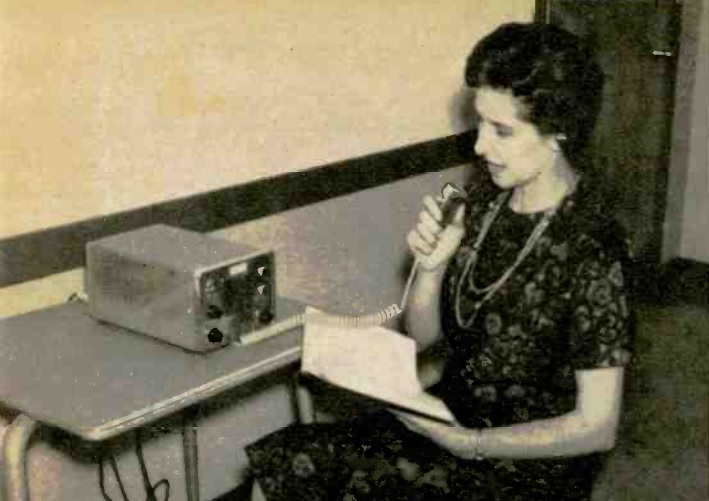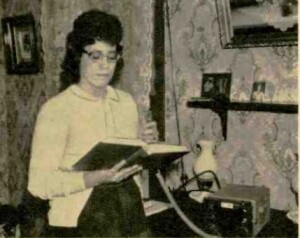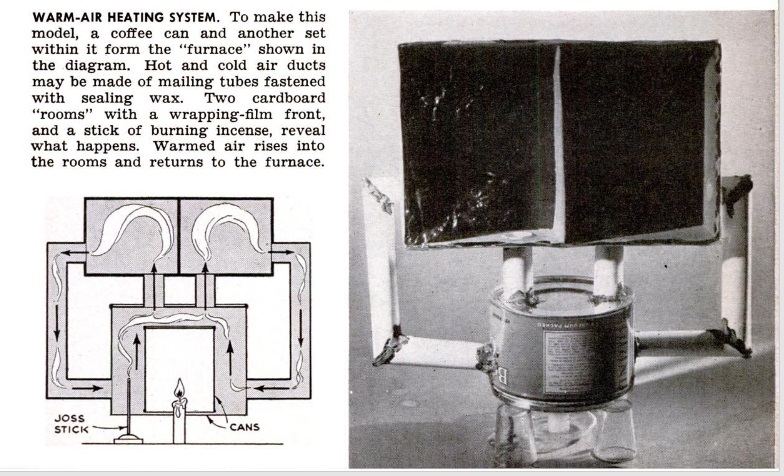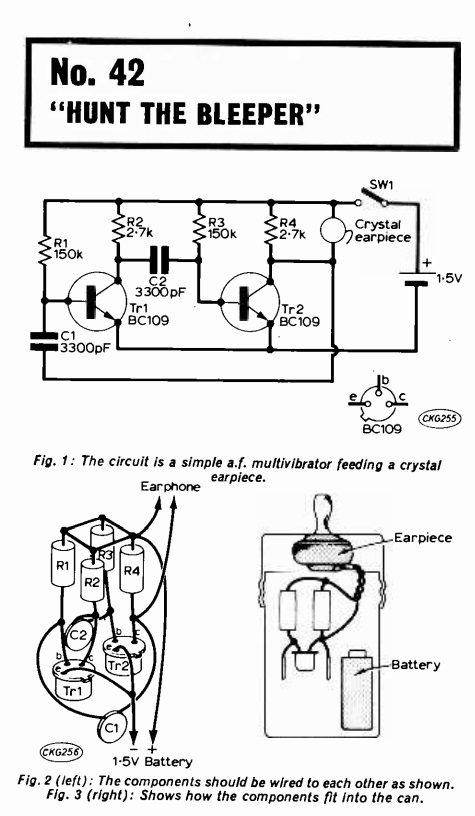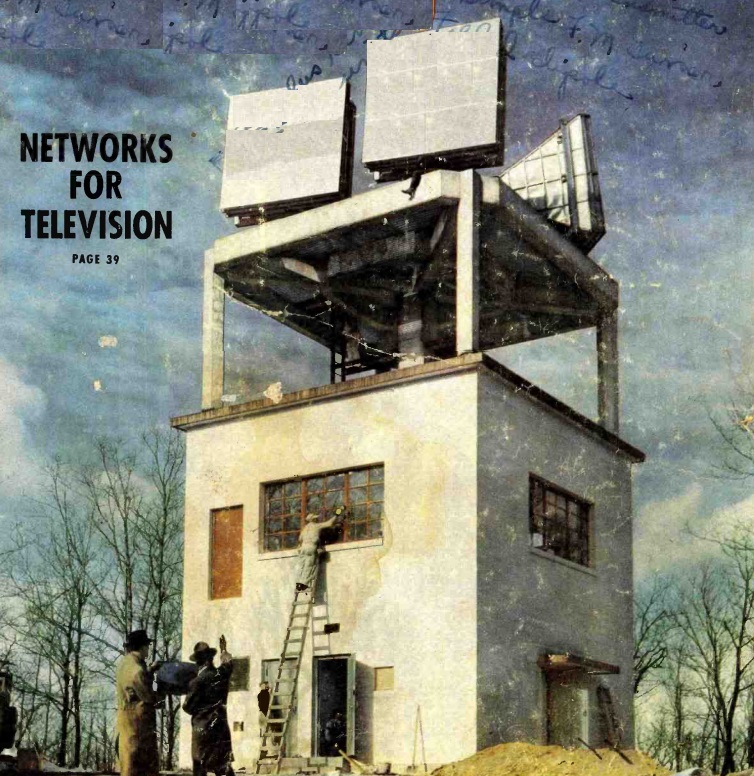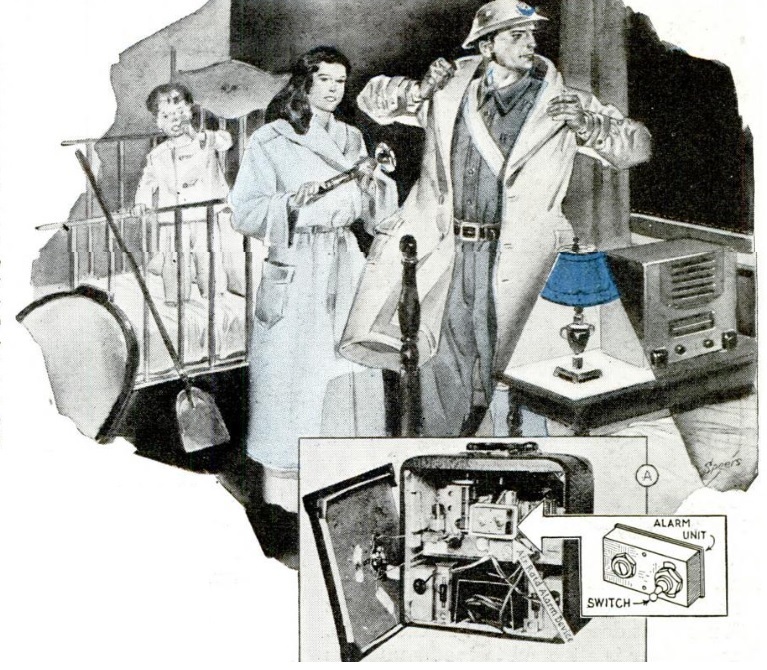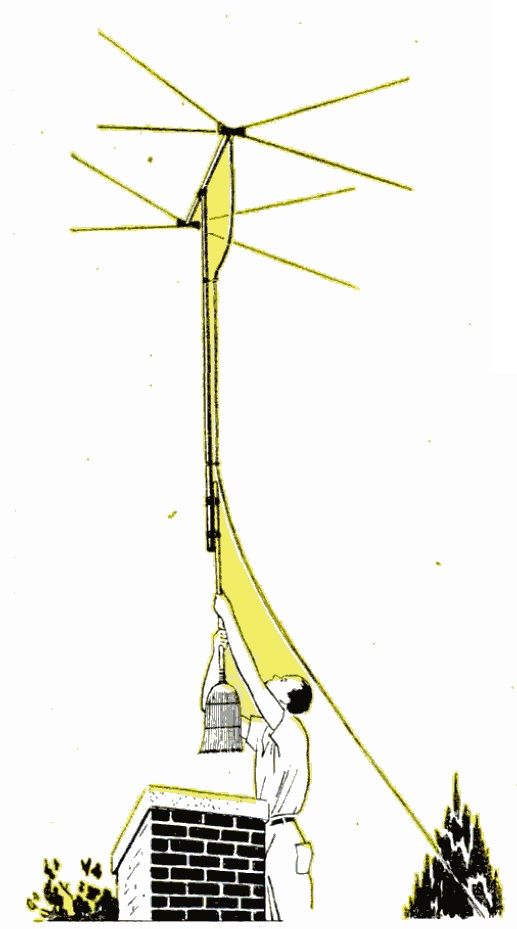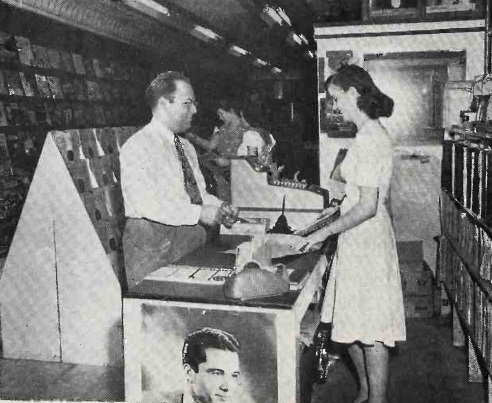 Shown here is Judy Rohrer, sales clerk at Green Record Shop, Chambersburg, Pennsylvania. The November 1947 issue of Radio Retailing profiled the store. Despite the town having a population of 15,000, the store grossed sales of $75,000 per year, thanks to the marketing efforts of owner Raymond L. Green. The store had a marketing plan which included utilizing every inch of available wall space, taking advantage of the album covers, which were designed as attention getters. The store also got the name and address of each new customer and recorded their musical likes. When new records came in that might interest them, the store followed up with a handwritten postcard.
Shown here is Judy Rohrer, sales clerk at Green Record Shop, Chambersburg, Pennsylvania. The November 1947 issue of Radio Retailing profiled the store. Despite the town having a population of 15,000, the store grossed sales of $75,000 per year, thanks to the marketing efforts of owner Raymond L. Green. The store had a marketing plan which included utilizing every inch of available wall space, taking advantage of the album covers, which were designed as attention getters. The store also got the name and address of each new customer and recorded their musical likes. When new records came in that might interest them, the store followed up with a handwritten postcard.
Radio ads were also important, and the store advertised over WCHA, a 1000 watt station with listeners as far away as Harrisburg. The shop assistants, Judy Rohrer shown here and Wilma Barnes, were billed as “Punch and Judy,” and new customers often asked for them by name. In other words, the store personnel were turned into well-known personalities.
Green had custom built the store’s fixtures for displaying albums, making the most of the store’s long, narrow layout. Record salesmen took note, and he had a sideline of building fixtures for other stores.
A neighboring town was the site of a “wealthy preparatory school,” and Green set up a table and album rack at a store in that town twice a week. This practice made him an institution among the record-hungry students.
In addition to records, the store also sold radios and radio-phono combos.
Some links on this site are affiliate links, meaning that this site earns a small commission if you make a purchase after following the link.
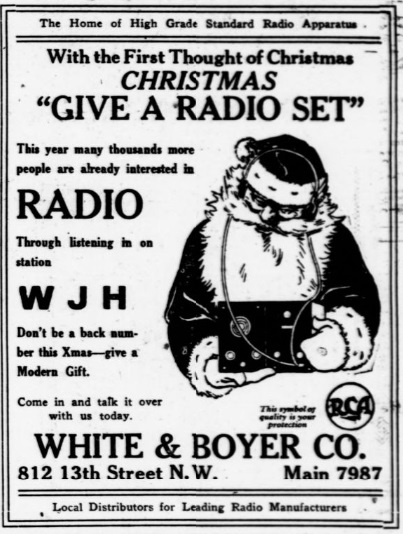 Christmas of 1922 was going to be a big one for radio, as evidenced by this ad in the Washington Herald a hundred years ago today, November 15, 1922. As shown here, Santa’s workshop was busy turning out radio sets, many of which would show up under the tree.
Christmas of 1922 was going to be a big one for radio, as evidenced by this ad in the Washington Herald a hundred years ago today, November 15, 1922. As shown here, Santa’s workshop was busy turning out radio sets, many of which would show up under the tree.
